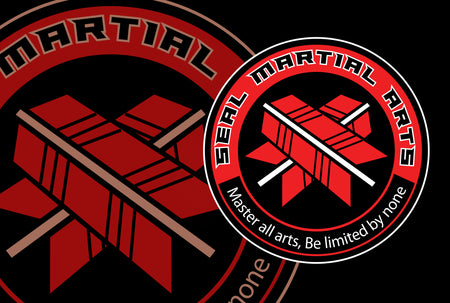
Onojutsu and Masakarijutsu: The Art of Japanese Battle Axes
In the realm of Japanese martial arts, there exists a fascinating discipline known as Onojutsu or Masakarijutsu. Rooted in centuries of tradition, these arts focus on the skillful use of the Japanese battle axe, known as the Ono or Masakari. While less renowned compared to disciplines like Kendo or Karate, Onojutsu and Masakarijutsu hold a unique place in Japanese history and culture, reflecting the practicality and versatility of traditional weaponry.
The origins of Onojutsu and Masakarijutsu can be traced back to ancient Japan, where the battle axe was a vital weapon on the battlefield. Initially used for felling trees and clearing paths, the Ono gradually evolved into a formidable weapon of war. Warriors known as Ono-bugyo were skilled in its use, employing techniques that were both efficient and deadly in combat.
During the feudal period, as warfare became more refined, the Ono retained its significance on the battlefield. Samurai warriors trained extensively in its use, mastering techniques that allowed them to cleave through armor and adversaries with precision. As a result, Onojutsu and Masakarijutsu became integral components of martial training, alongside other traditional arts like Kenjutsu and Jujutsu.
Central to Onojutsu and Masakarijutsu are a diverse array of techniques designed to maximize the effectiveness of the battle axe. Practitioners learn to wield the weapon with finesse, employing strikes, blocks, and grappling maneuvers with fluidity and precision. Footwork and positioning are paramount, as practitioners must maintain balance and control while wielding a weapon of considerable weight.
Training in Onojutsu and Masakarijutsu often involves solo kata (forms) and paired drills, where practitioners simulate combat scenarios to hone their skills. Emphasis is placed on timing, distance, and situational awareness, allowing practitioners to anticipate and counter their opponent's movements effectively.
While the era of widespread battlefield combat has long passed, Onojutsu and Masakarijutsu continue to hold relevance in modern Japan. These arts serve as a link to Japan's rich martial heritage, preserving techniques and traditions that have been passed down through generations.
Moreover, the practice of Onojutsu and Masakarijutsu offers practitioners valuable insights into principles of discipline, focus, and perseverance. Beyond its practical applications, training in these arts fosters a sense of cultural identity and connection to Japan's past, enriching the lives of those who study them.
In contemporary Japan, Onojutsu and Masakarijutsu are kept alive through dedicated practitioners and traditional martial arts schools. While not as widely practiced as some more mainstream disciplines, these arts continue to attract enthusiasts who are drawn to their historical significance and technical complexity.
In conclusion, Onojutsu and Masakarijutsu stand as testament to Japan's martial heritage, embodying the spirit of discipline, skill, and tradition. Through the mastery of the Japanese battle axe, practitioners not only honor the legacy of their ancestors but also gain invaluable insights into the principles of combat and self discipline. As custodians of these ancient arts, practitioners play a vital role in preserving Japan's cultural legacy for generations to come.
The origins of Onojutsu and Masakarijutsu can be traced back to ancient Japan, where the battle axe was a vital weapon on the battlefield. Initially used for felling trees and clearing paths, the Ono gradually evolved into a formidable weapon of war. Warriors known as Ono-bugyo were skilled in its use, employing techniques that were both efficient and deadly in combat.
During the feudal period, as warfare became more refined, the Ono retained its significance on the battlefield. Samurai warriors trained extensively in its use, mastering techniques that allowed them to cleave through armor and adversaries with precision. As a result, Onojutsu and Masakarijutsu became integral components of martial training, alongside other traditional arts like Kenjutsu and Jujutsu.
Central to Onojutsu and Masakarijutsu are a diverse array of techniques designed to maximize the effectiveness of the battle axe. Practitioners learn to wield the weapon with finesse, employing strikes, blocks, and grappling maneuvers with fluidity and precision. Footwork and positioning are paramount, as practitioners must maintain balance and control while wielding a weapon of considerable weight.
Training in Onojutsu and Masakarijutsu often involves solo kata (forms) and paired drills, where practitioners simulate combat scenarios to hone their skills. Emphasis is placed on timing, distance, and situational awareness, allowing practitioners to anticipate and counter their opponent's movements effectively.
While the era of widespread battlefield combat has long passed, Onojutsu and Masakarijutsu continue to hold relevance in modern Japan. These arts serve as a link to Japan's rich martial heritage, preserving techniques and traditions that have been passed down through generations.
Moreover, the practice of Onojutsu and Masakarijutsu offers practitioners valuable insights into principles of discipline, focus, and perseverance. Beyond its practical applications, training in these arts fosters a sense of cultural identity and connection to Japan's past, enriching the lives of those who study them.
In contemporary Japan, Onojutsu and Masakarijutsu are kept alive through dedicated practitioners and traditional martial arts schools. While not as widely practiced as some more mainstream disciplines, these arts continue to attract enthusiasts who are drawn to their historical significance and technical complexity.
In conclusion, Onojutsu and Masakarijutsu stand as testament to Japan's martial heritage, embodying the spirit of discipline, skill, and tradition. Through the mastery of the Japanese battle axe, practitioners not only honor the legacy of their ancestors but also gain invaluable insights into the principles of combat and self discipline. As custodians of these ancient arts, practitioners play a vital role in preserving Japan's cultural legacy for generations to come.
